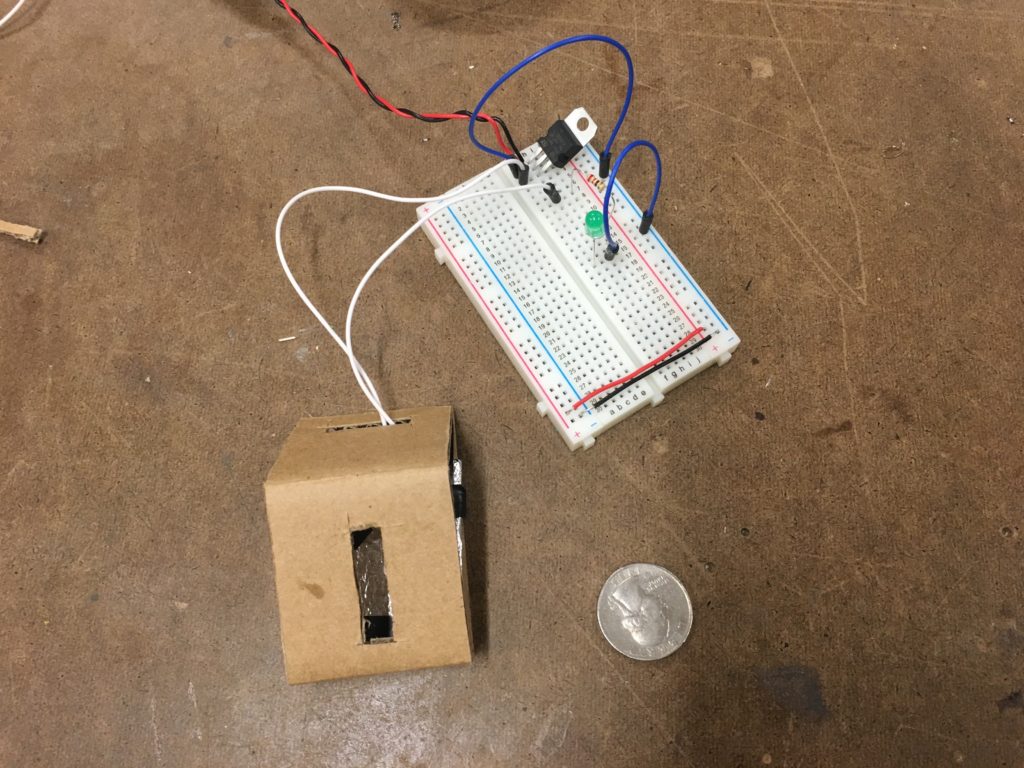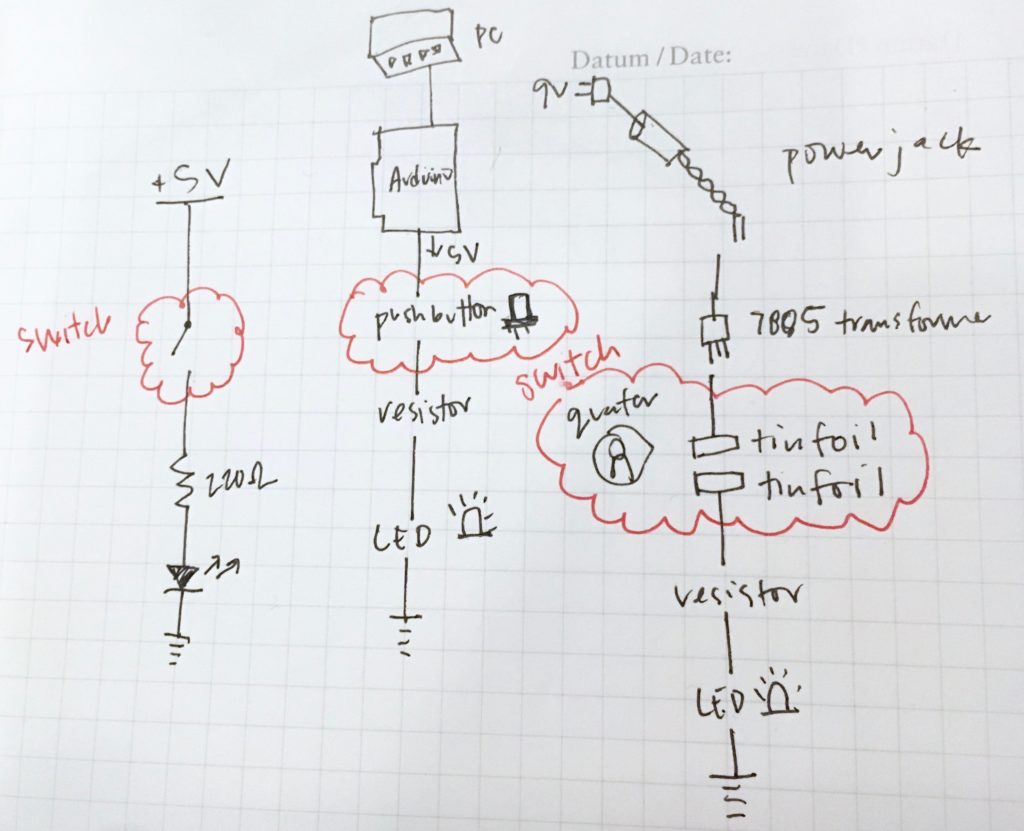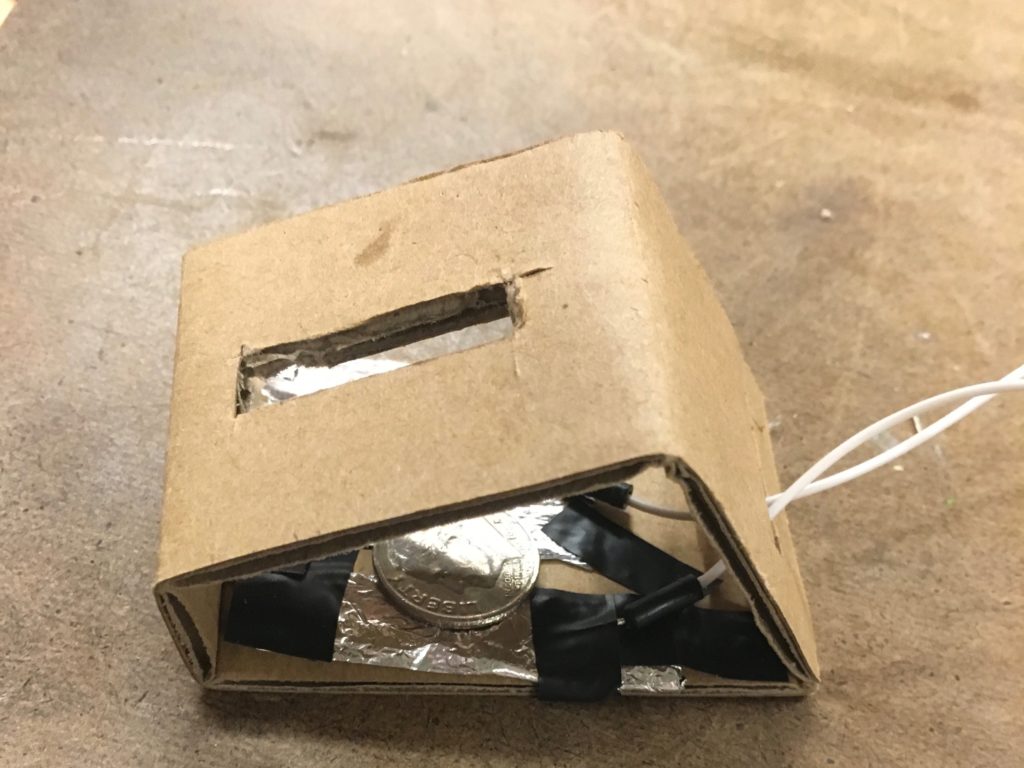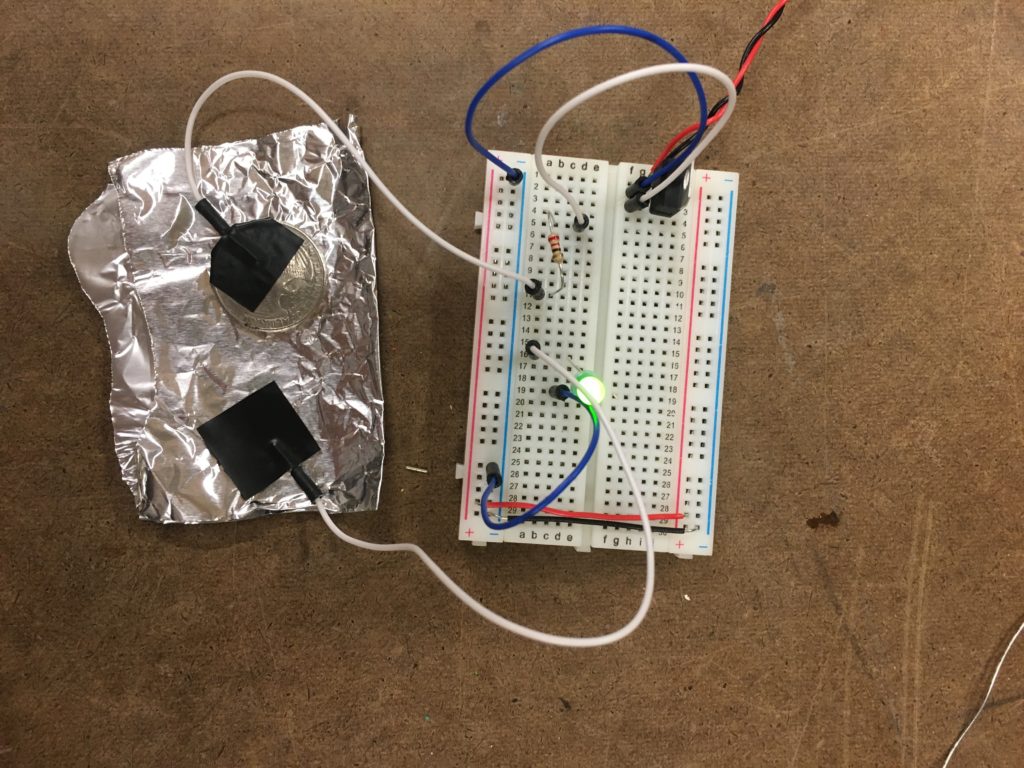
A switch can simply be considered as two pieces of conductive material being separated and then brought together. In order to make a homemade switch, I turned to my pocket: coins are conductive!

Using a quarter and tinfoil, I rigged up a light-up “piggybank”. When a coin is dropped through the slot, it bridges the gap between two separate pieces of tinfoil, thus closing the circuit and illuminating the LED.

Before assembling the final enclosed “design”—what would Dieter Rams say!?—I tested the circuit by attaching one wire to a quarter and then another to a piece of tinfoil. When I lifted the quarter, the LED turned off and likewise, when I dropped the quarter on the tinfoil the LED illuminated. It was enough to prove that a quarter and some tinfoil would do the trick!

Still, hiding the tinfoil beneath some cardboard feels a bit like putting lipstick on a pig!